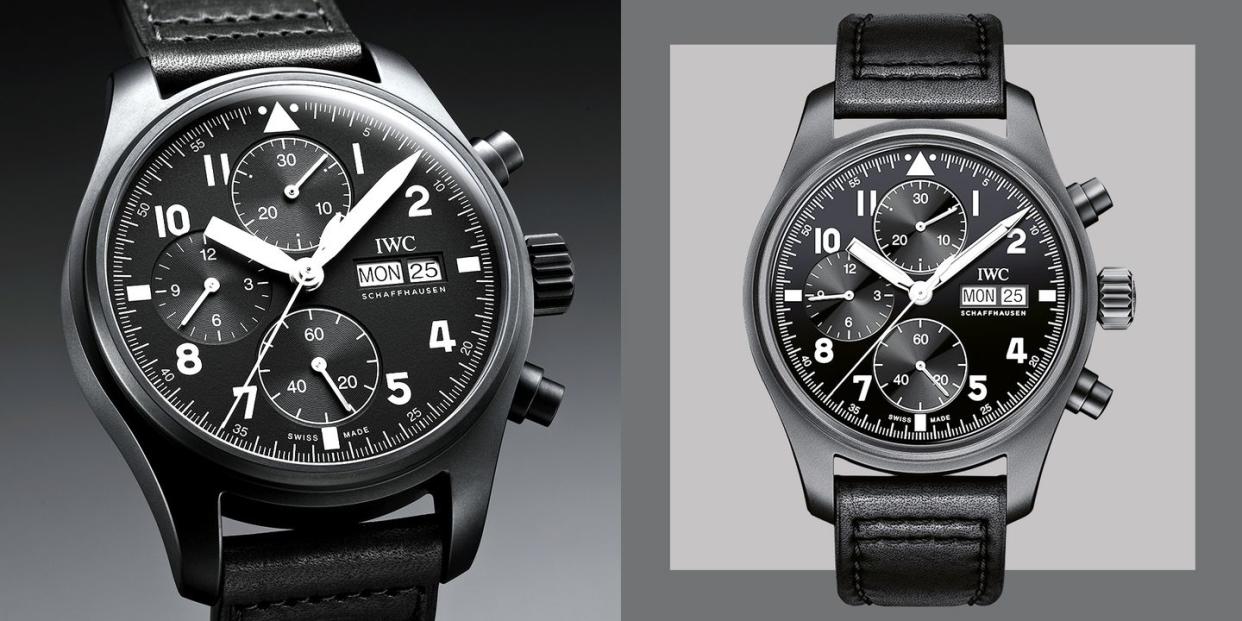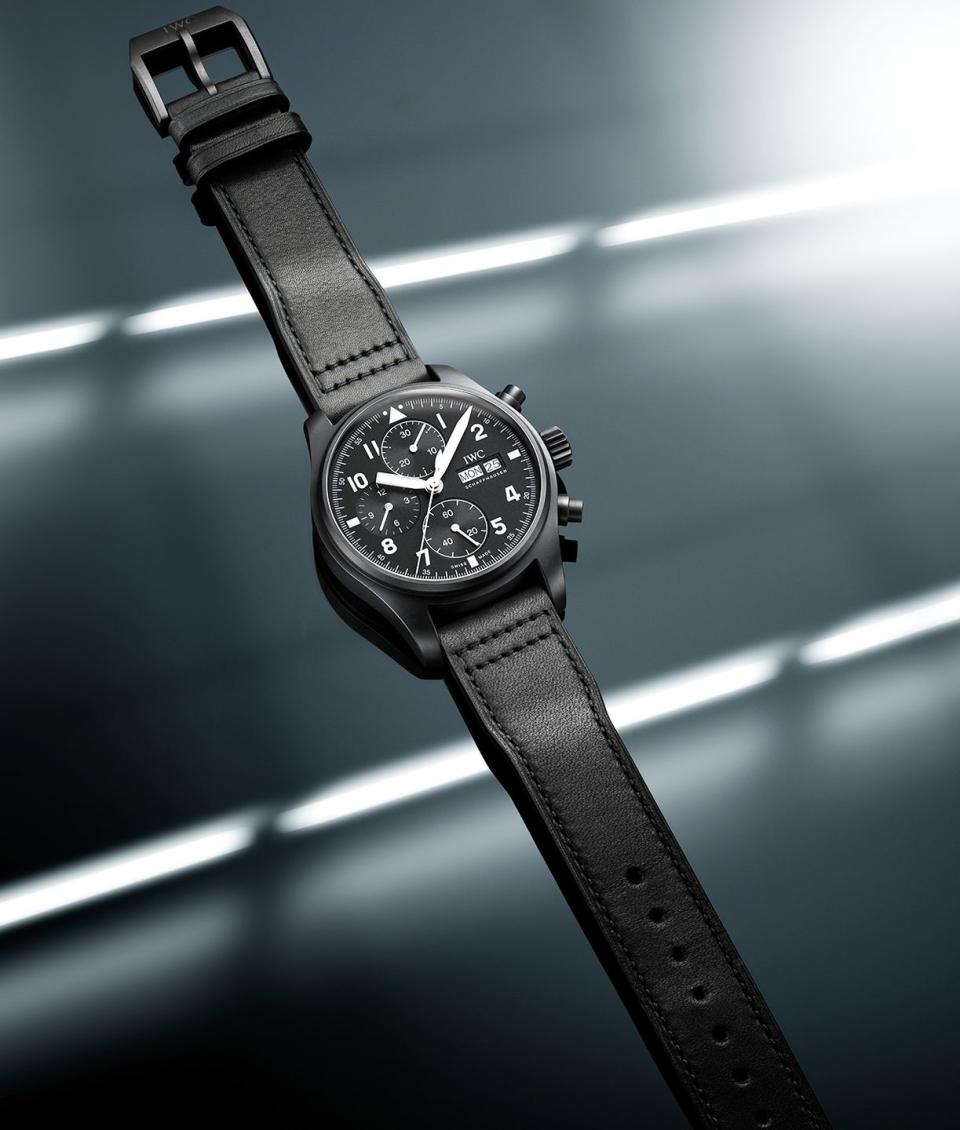A Groundbreaking IWC Pilot's Watch Is Back in an Even More Groundbreaking Material

Welcome to Dialed In, Esquire's weekly column bringing you horological happenings and the most essential news from the watch world since March 2020.
Swiss maker IWC is never far away from its long history in robust flying watches. As tools for military navigators and pilots, these mechanical marvels were life-saving devices, able to assist in the vital calculations needed to get an aircraft safely to and from its target and with fuel to spare. High on visibility and low on frills, most early IWC pilot watches created in the 1940s both during and after WW2 have become grail watches and defined Pilots as a longstanding and popular pillar of its watch repertoire. Some, however, were more successful than others.
IWC’s brand new Fliegerchronograph “Tribute to 3705,” released last week, is an homage to a very singular watch from the Flieger (or Pilot) line with a suitably tool-y name. When it emerged in 1994, the 3705 was as groundbreaking as it was classic. It was made in a then-very-new material, ceramic (or zirconium oxide), a substance first developed by NASA for the nose cone of the space shuttle for its heat resistance on re-entry. IWC pioneered ceramic’s crossover into watchmaking, where it has since proliferated and become a fixture.

At the time, however, it did not—erm—take off, and only a reported 999 watches were made in this wonder material before it was quietly phased out. Fast forward almost a quarter of a century and the Luminova on original Flieger “Keramik” dials had aged to a warm orange. And because of its rarity, those originals become hotly sought-after. One piece from the personal collection of former IWC director, the late Günter Blümlein, was auctioned for a staggering $53,750 late in 2018. Having steered IWC through the quartz crisis, Blümlein was something of a legend, so his reputation may have bumped the price somewhat.
The new “Tribute to 3705” watch—limited to 1,000 pieces—is a very faithful riff on the original 3705 except in one respect. This time, it is made in a much more recent IWC innovation, Ceratanium, that first debuted in the Aquatimer diver in 2017. Ceratanium is an IWC-proprietary alloy of ceramic and titanium. In scientific terms it is "sintered"—aka "baked" to you and me—which creates a case that solidly combines both materials and their properties: hardness, lightness, and resistance to scratching.
In a curious art-meets-life twist, though it was released only in 2017 after five years in R&D, Ceratanium also featured in a 2012 Megaman video game—described as an alloy of precisely the same materials and used for the body armor of Megaman himself. Clearly, Megaman has done his research.
You Might Also Like

